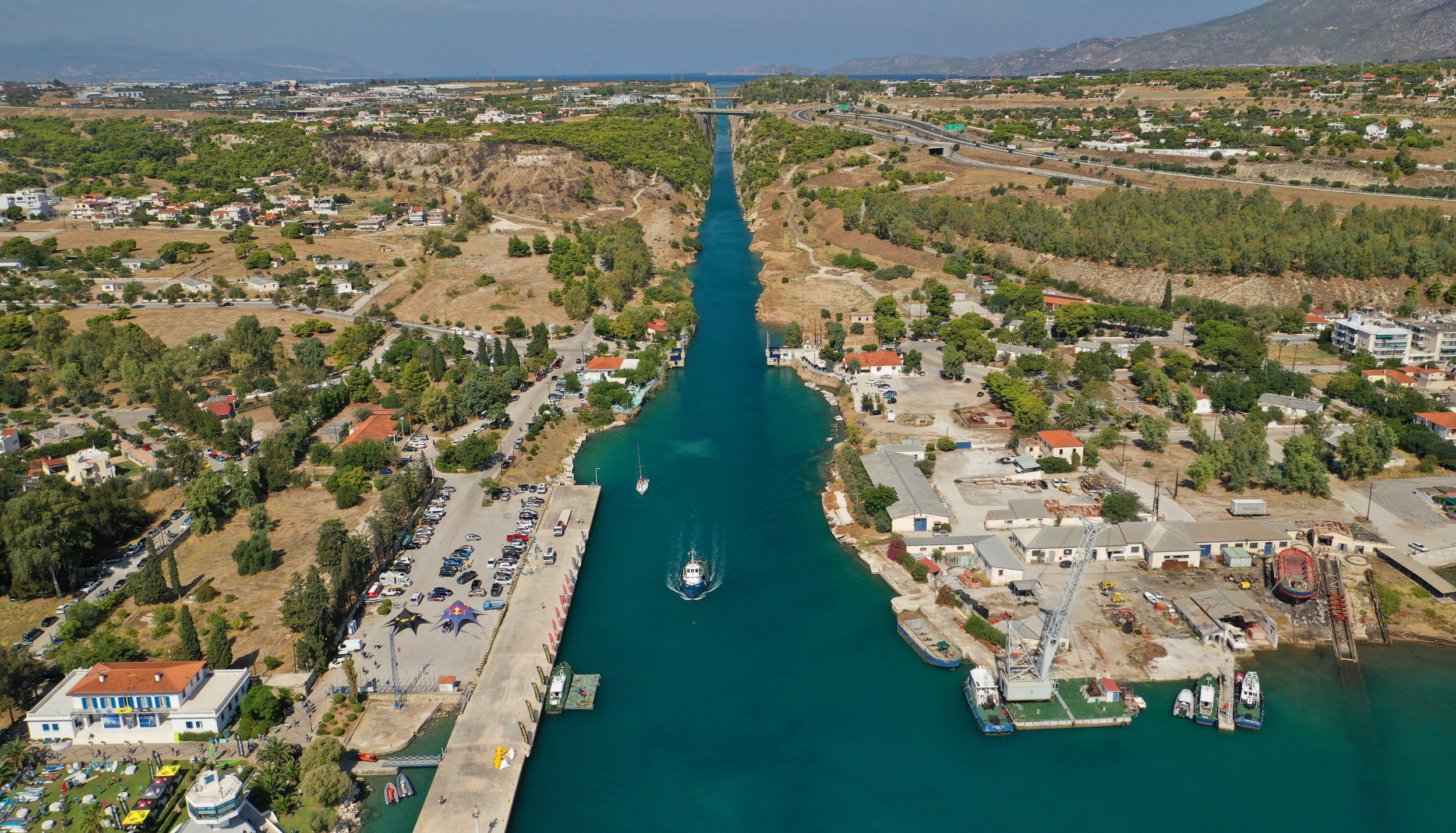Project Outline
The Corinth Canal, a crucial maritime passage in Greece, is managed by a state-owned company under the supervision of the Hellenic Corporation of Assets and Participations (HCAP). While its primary source of revenue comes from transit fees charged to vessels passing through, a strategic opportunity was identified to leverage its extensive real estate holdings along the canal for additional revenue generation.
The goal of this project was to explore and propose viable commercial and cultural development opportunities that would maximize the value of the Corinth Canal’s assets. The study focused on identifying sustainable revenue streams, ensuring compatibility with the canal’s strategic importance, and addressing regional economic needs.
Mapping the Strategy
Over a four-month period, our consulting team conducted a thorough analysis of the available land assets along the canal and evaluated multiple development scenarios. We began by assessing the full extent of available land along the canal’s length, identifying potential opportunities for commercial, hospitality, and cultural development. This helped frame the key areas where investment could generate sustainable revenue.
To explore viable development paths, we analysed the feasibility of various options. Hotel investments were initially considered but ultimately deemed unfeasible due to high competition in nearby areas such as Loutraki and Porto Heli. Instead, our team identified marina development as a strong alternative, recognizing the Corinth Canal’s strategic position for yachts and sailing vessels traveling between the Ionian and Aegean seas. In addition, we proposed a discount retail outlet centre, modelled after successful concepts, aimed at attracting visitors from Athens and surrounding regions.
Beyond commercial initiatives, our analysis extended to infrastructure and cultural enhancements. We proposed the development of a small shipyard to support vessel maintenance and service within the marina. Additionally, we recommended the creation of a Corinth Canal Museum to highlight the historical and cultural significance of the canal. To further enhance the area’s appeal, we suggested implementing cycling and walking trails along the canal’s stretch, utilizing otherwise non-developable land for recreational purposes.
By identifying and evaluating the most promising opportunities, we ensured that the Corinth Canal’s assets could be leveraged for long-term economic sustainability. This project exemplifies how strategic vision, backed by thorough analysis, can transform underutilized assets into thriving economic hubs.
After evaluating multiple alternatives, a mixed-use development strategy was recommended, incorporating:
- A marina to accommodate vessels needing short-term berth.
- A discount retail outlet center, leveraging the strategic location of the canal as a transit hub.
- Cultural and recreational attractions, including a museum and outdoor activity zones.
This combination was identified as the most effective way to generate sustainable revenues while enhancing the overall appeal of the Corinth Canal area.
Moving Forward
This project showcases how strategic asset utilization can unlock new economic potential for public infrastructure. By balancing commercial viability with cultural and environmental considerations, the proposed development plan provides a roadmap for transforming the Corinth Canal into a multifaceted destination, beyond its traditional role as a maritime passage.
